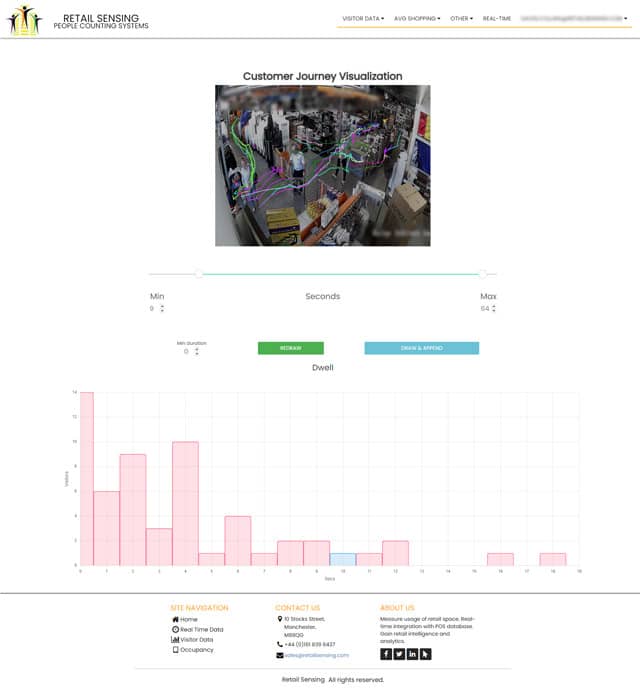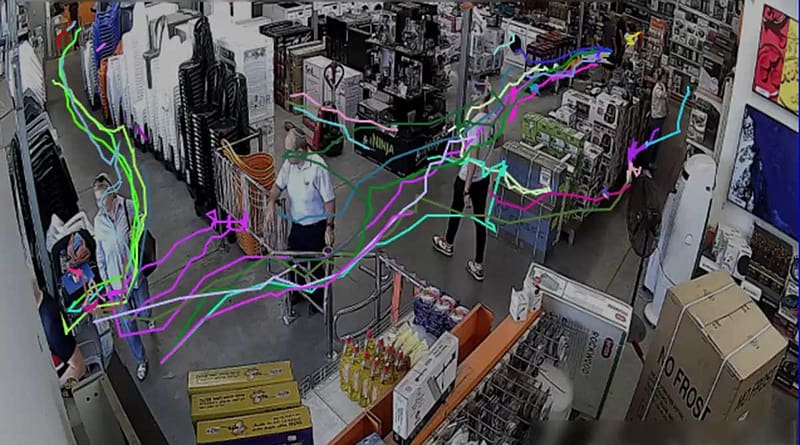How to track the customer journey and boost in-store sales
New development from the Retail Sensing Ltd engineering team: Using existing CCTV, retailers can now obtain valuable information that was not previously available: the customer journey in the store. This feature is added to our full solution. The retailer receives extremely important data that is easy to analyse and easy to apply on the sales-floor in few simple steps. The results will be reflected in increased sales almost immediately.
How? By studying the customer journey, we can optimise the store layout once we know the answers to the following questions:
- Are customers following expected paths within the store?
- How do customers locate specific products?
- Which areas attract customer attention and engagement?
- What routes do customers take to reach their desired destinations?
- Which are the most popular and neglected areas within the store?
- How long is the average shopping time?
- How to improve the customer experience?
By visualising customer journeys, retailers gain access to essential information that guides informed decisions regarding product placement and space utilisation. This data-driven approach maximises the store’s potential while enabling the identification and elimination of any pain points.
Real-Time Reporting via the Cloud
The journeys are shown in real-time in the retailer’s on-line dashboard.

Customer Journey and Heat Maps
The customer journey map is not the same as a heat map. A heat map is useful in that it shows the most (and least) popular areas of a store. Customer journeys track the path that a customer takes through a store, from the moment they enter to the moment they leave.
Our software can produce both customer journey tracks and a heat map.
How it works whilst complying with GDPR
The store’s normal CCTV cameras link to our AI-powered software which detects and tracks people anonymously. The software sees each customer as a “box” and assigns each box an id code. It tracks the centre of each box (representing a customer) and plots their route on an image of the store. It doesn’t know who the customers are, neither does it store any information that could later identify them.
As well as producing a journey map, the software records average shopping times (dwell times), counts footfall and can perform other tasks like queue and occupancy monitoring.
By embracing AI-powered customer tracking technology, retailers can gain invaluable insights into customer behaviour and make data-driven decisions to enhance the overall shopping experience, all while safeguarding customer privacy.
